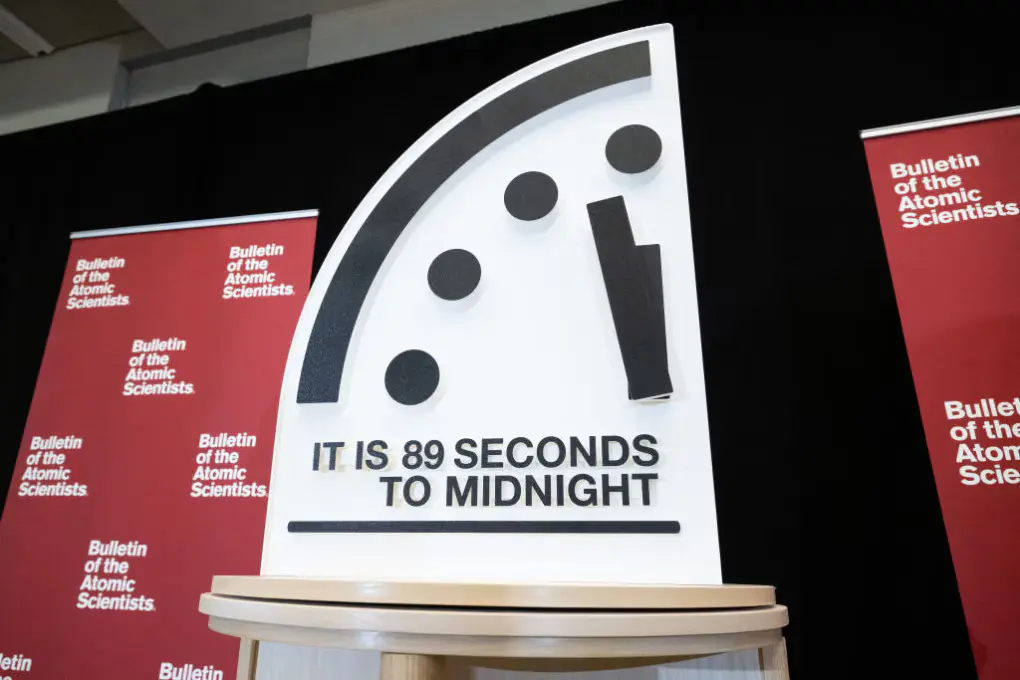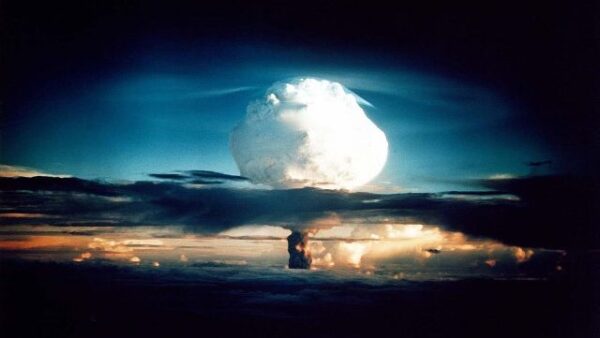The Doomsday Clock
The Doomsday Clock, the symbolic timer marking humanity’s march toward self-destruction, has advanced once again. What threats drove this decision?
We are now 89 seconds from midnight—a countdown we do not want to reach zero. The Doomsday Clock, a symbolic tool created in 1947 by the Bulletin of the Atomic Scientists to track humanity’s “progress” toward its own extinction, has moved another step closer to the hypothetical moment when the world as we know it could collapse.
Nuclear threats, the climate crisis, potential future pandemics, and the merging of AI with military technologies loom over humanity’s safety, peace, and development on Earth. These are the primary reasons behind the decision to push the Clock’s hands forward.
The Doomsday Clock: What is it, and when was it created?
The Bulletin of the Atomic Scientists is a journal focused on global security issues—particularly nuclear weapons and other weapons of mass destruction—founded in 1945 by former physicists of the Manhattan Project (the U.S. atomic bomb program) after the bombings of Hiroshima and Nagasaki. The Doomsday Clock was created two years later as a symbolic timer to measure humanity’s proximity to an imagined global catastrophe—”midnight.” Initially representing nuclear war, “midnight” has since expanded to include other existential threats, such as a climate-ravaged planet or irreversible consequences of human recklessness.
What moves the Doomsday Clock’s hands?
The decision rests with the Bulletin’s Science and Security Board, in consultation with external experts, including nine Nobel laureates. The last time the Clock moved forward was in January 2023, when it reached 90 seconds to midnight. At its creation in 1947, during the early Cold War, the Clock was set to 7 minutes to midnight. The farthest it has ever been from “midnight” was in 1991, following the easing of tensions between the U.S. and the former Soviet Union, the fall of the Berlin Wall, German reunification, and the signing of the first Strategic Arms Reduction Treaty (START).
Originally measured in minutes, the shift to counting seconds began in 2017—a year marked by rising nationalism, then-new President Donald Trump’s nuclear rhetoric, and the U.S. withdrawal from the Paris Climate Agreement.
The shadow of nuclear weapons and military AI
Experts expressed concern over Russia’s suspension of compliance with the New START Treaty and its withdrawal from ratification of the Comprehensive Nuclear-Test-Ban Treaty.
China is rapidly expanding its nuclear arsenal, while the U.S. has abandoned its role as a voice of caution, appearing inclined to grow its nuclear stockpile and adopt policies that normalize the idea of “limited” nuclear warfare.
Also alarming are efforts to integrate AI into military weapons, which “raise questions about how much autonomy machines will have in making or supporting combat decisions—including those that could kill on a massive scale.” Meanwhile, the spread of disinformation weakens humanity’s ability to address critical issues.
Climate change and future pandemics
2024 has starkly confronted us with the immediate consequences of climate change and our failure to act. All is not lost—much can still be done—but we must recover from the disappointments of COP29 and the potential exit of the world’s largest historical emitter from the Paris Agreement.
The Clock’s advance also reflects threats from infectious disease proliferation, concerns about biosecurity labs, and the use of AI in biological research. “Leaders,” write the Bulletin’s scientists, “must establish competent authorities to provide reliable information, improve tracking of disease spread patterns linked to climate change, reduce high-containment labs, and limit active bioweapons programs.”

Originally posted 2025-01-31 11:24:16.




